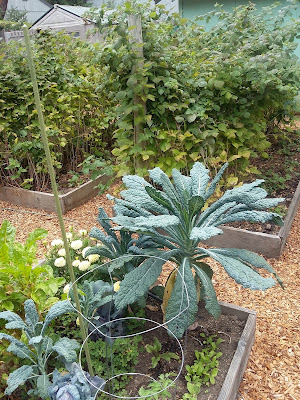Soon after moving into the house we now live in, a friend from church offered me a greenhouse. I was both grateful and humbled. It took a while before I was able to clean our backyard up enough to place the greenhouse in its current location. Once that was done, it took some time determining what kinds of containers I could use for the greenhouse. Initially a friend said that he could provide some shallow containers, which probably would not have been the best in the long-run.
 |
| Note the west-side shade. This is intentional to prolong my spring transplants. |
 |
| Coconut Fiber (Coir) Blocks in my new stock tank. |
 |
| A view from the front door. Still need to move blocks and fertilizer! (= |
After finding that more shallow containers could not be procured I got tired of having the greenhouse mostly vacant, so I purchased a (nearly) 6’ long by 2’ wide feed stock tank – like the kind used for providing water for livestock. With that done, I then had my father purchase some coco peat fiber blocks or coir from Santa Rosa. These were reconstituted while I sprouted my transplants. Though I normally do not do transplant, sometimes it is the only way to get plants large enough in the time I have. The transplants were potted into the stock tank about a month ago and, despite our diminishing sunlight this fall, they are still growing well.
 |
| Carosello Growing in compost, but losing ground to woodlice. |
 |
| Some plants have been chewed up so much, that they needed to be removed. |
One unfortunate thing that I did do was I sifted some compost to help in feeding the small plants. The compost itself was not bad, but the pill bugs or woodlice that came along in the compost decided to start chewing on my plants. I had no idea how destructive they could be! Once they had damaged most of my cucumber plants enough that I was getting pretty desperate the inspiration finally hit me. I could just sprinkle some diatomaceous earth on top of the soil. At last – an organic solution for self-contained invertebrate pests in the greenhouse!
 |
| Diatomaceous Earth may not look pretty, but it works! |



























